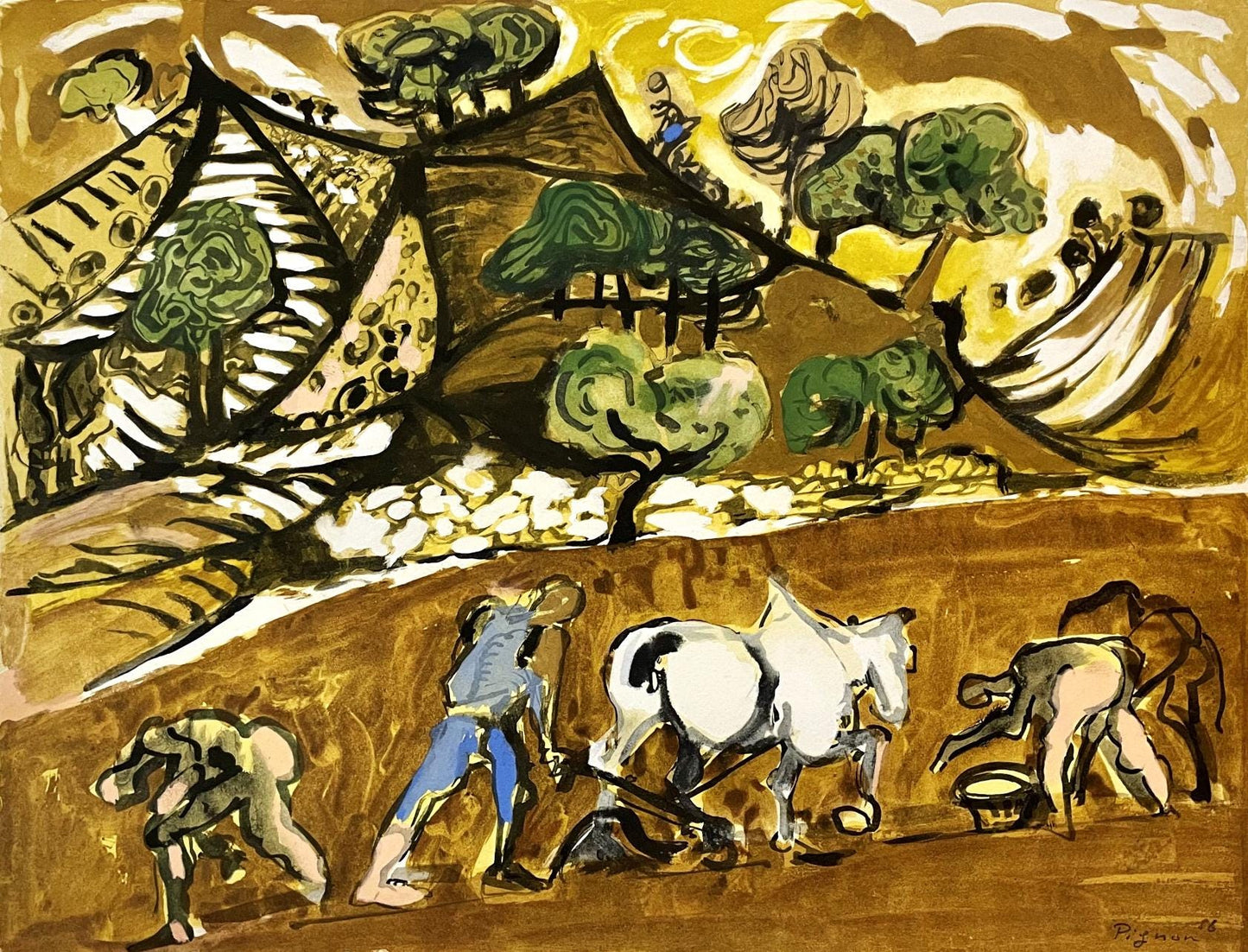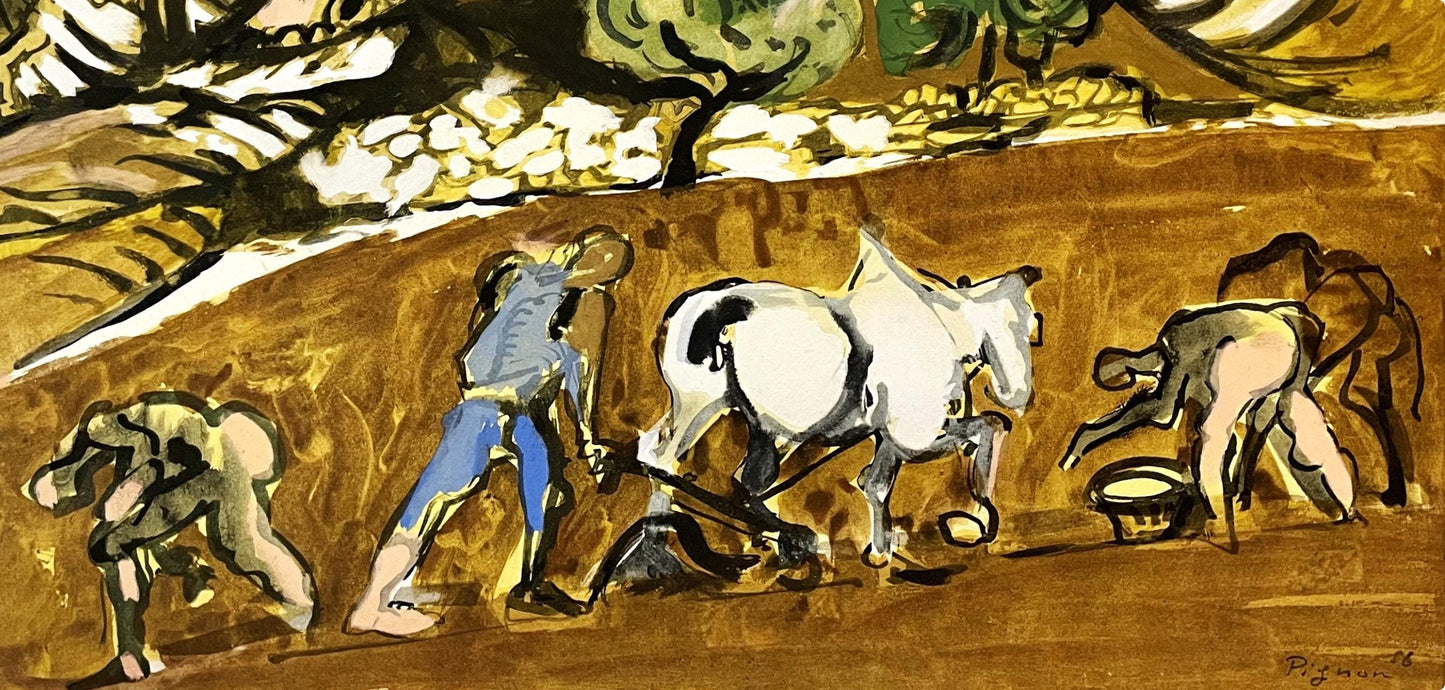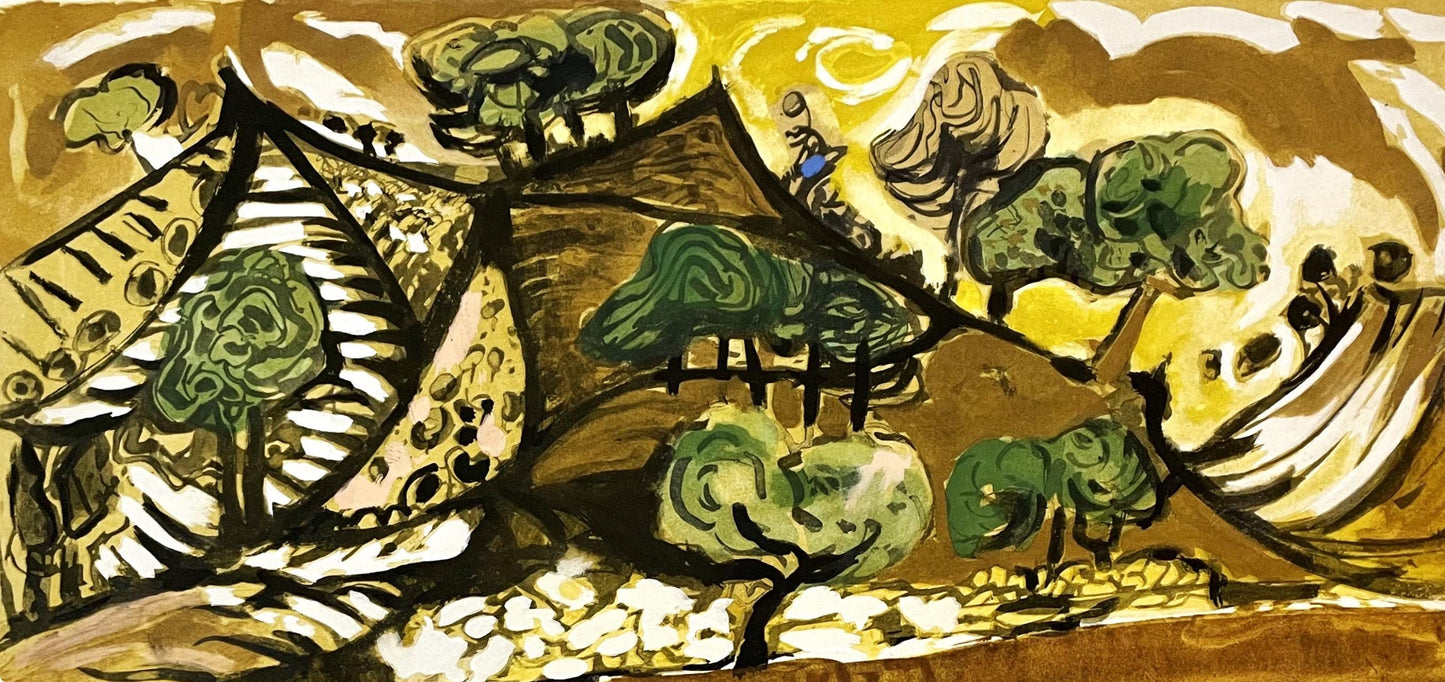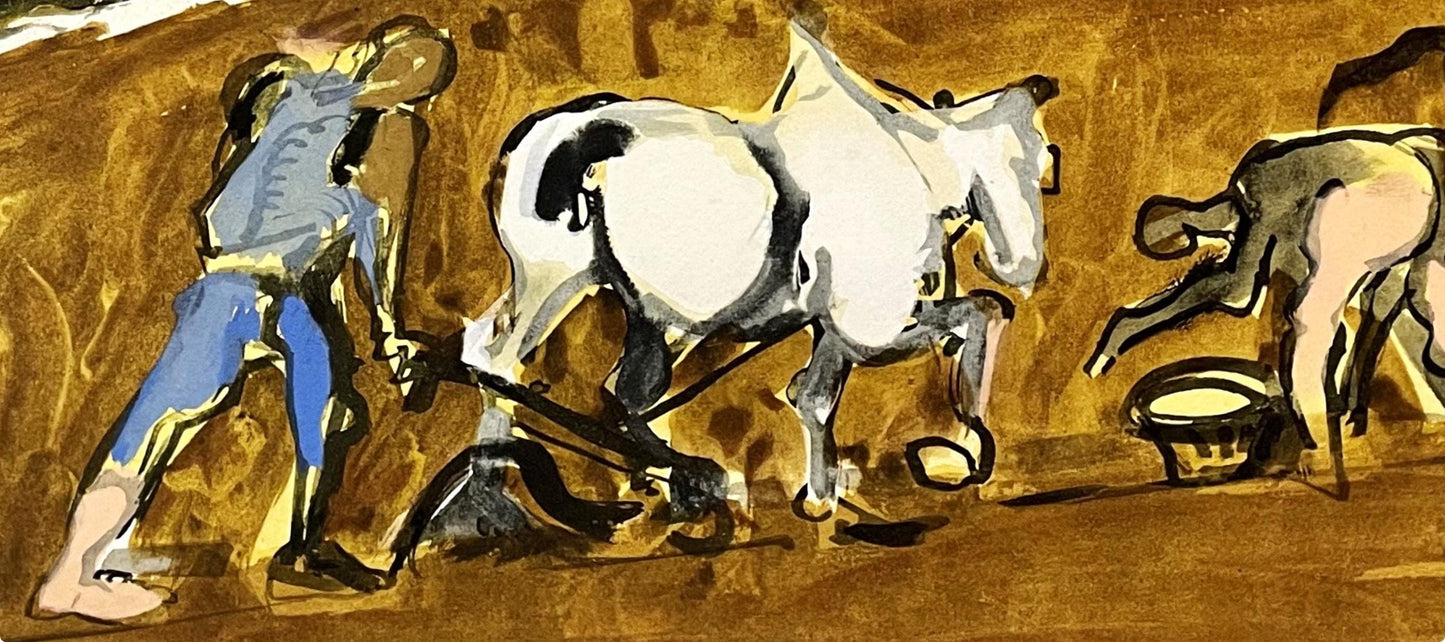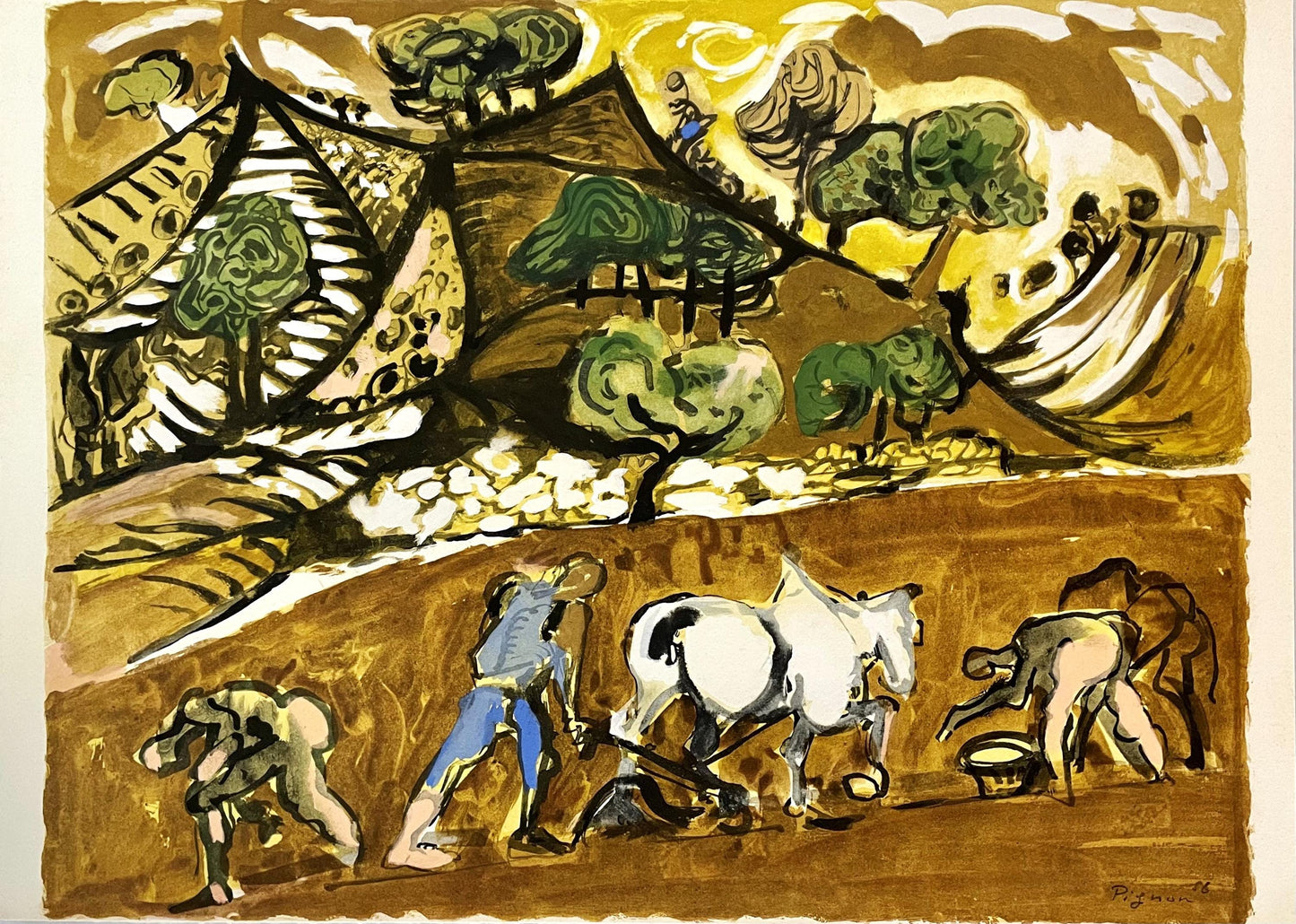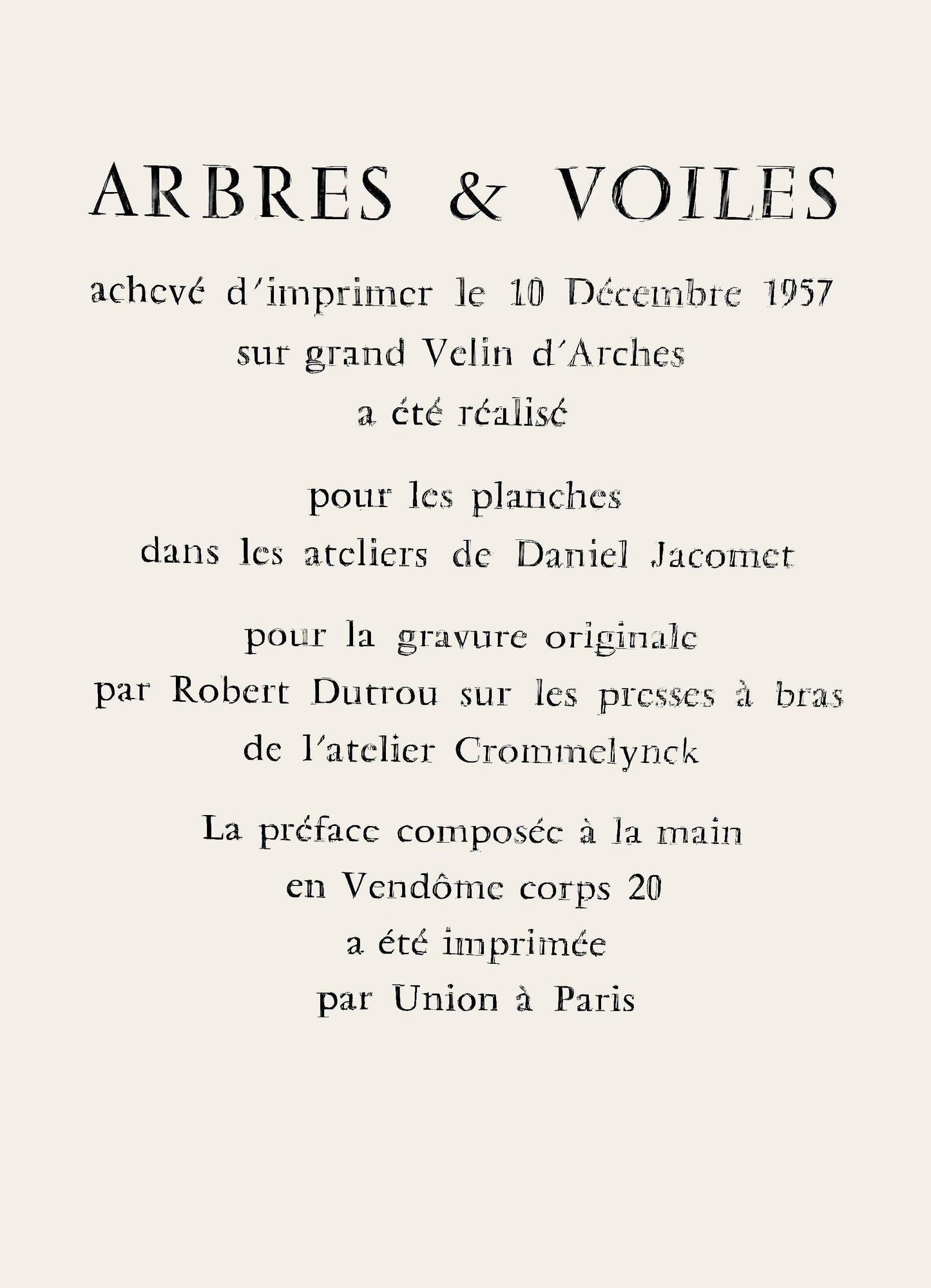1
/
of
7
Auction Ended: August 13, 2025
Post-Auction Sale Ends in:
Douard Pignon, Composition, Arbres Et Voiles, Lithograph
Douard Pignon, Composition, Arbres Et Voiles, Lithograph
Regular price
$873.40 USD
Regular price
$0.00 USD
Sale price
$873.40 USD
Unit price
/
per
Couldn't load pickup availability
Condition: Pre-Owned
Lithograph and stencil on grand Velin d'Arches paper. Paper size: 12.2 x 17.32 inches. Excellent condition. Inscription: signed in the plate and unnumbered, as issued. Notes: from the folio, douard Pignon, Arbres et Voiles, 1957. Published by Au Vent D'Arles, Paris; printed by Atelier de Daniel Jacomet, Paris, December 10, 1957 in an edition of 200, plus 20 out of commerce. Excerpted from the folio (translated from French), Completed printing on December 10, 1957, on g......
Lithograph and stencil on grand Velin d'Arches paper. Paper size: 12.2 x 17.32 inches. Excellent condition. Inscription: signed in the plate and unnumbered, as issued. Notes: from the folio, douard Pignon, Arbres et Voiles, 1957. Published by Au Vent D'Arles, Paris; printed by Atelier de Daniel Jacomet, Paris, December 10, 1957 in an edition of 200, plus 20 out of commerce. Excerpted from the folio (translated from French), Completed printing on December 10, 1957, on g......
Condition: Pre-Owned
Lithograph and stencil on grand Velin d'Arches paper. Paper size: 12.2 x 17.32 inches. Excellent condition. Inscription: signed in the plate and unnumbered, as issued. Notes: from the folio, douard Pignon, Arbres et Voiles, 1957. Published by Au Vent D'Arles, Paris; printed by Atelier de Daniel Jacomet, Paris, December 10, 1957 in an edition of 200, plus 20 out of commerce. Excerpted from the folio (translated from French), Completed printing on December 10, 1957, on grand Velin d'Arches, was made for the boards in the ateliers of Daniel Jacomet; for the original engraving by Robert Dutrou on the arm presses of the atelier Crommelynck. The hand-composed preface in Vendme corps 20 was printed by imprime par Union in Paris.
EDOUARD PIGNON (1905-1993) was a French painter of the School of Paris. In 1933 he joined the French Communist Party while he was already a member of Association des crivains et artistes rvolutionnaires, where he met painters such as Jean Hlion, Auguste Herbin, Andr Marchand, Maurice Estve and Vieira da Silva as well as writers such as Louis Aragon. In 1935, Pignon was able to devote himself more to painting. From 1936 until the war, he was editor of the weekly Regards. His first solo exhibition was held in 1939 in Paris. After the German invasion of France, Pignon was mobilized in to the army. He returned to Paris in 1940 and immediately became a member of the Resistance. His house becomes a place of meeting for artists and resistance members such as Aragon and Elsa Triolet who stayed there for some period. Alongside artists like Jean Bazaine, Esteve, Le Moal and Alfred Manessier, Pignon was one of "Twenty painters of French tradition", who exhibits in Paris at the Braun Galery in 1941 in order to resist the Nazi theory of "degenerate art". With douard Goerg and Andr Fougeron, in 1943 he clandestinely founded the Front National des Arts, a branch of the National Front. After the war, he collaborated with Jean Vilar and designed the first Avignon festivals. Pignon also came in to conflict with Communist Party for not complying with socialist realism and continued to create figurative artistic works. In 1947 he married the French communist critic Hlne Parmelin. In 1951, at the invitation of his friend Pablo Picasso, Pignon went to the Fournas workshop in Vallauris. In 1956, after the Soviet invasion of Hungary, he was one of ten intellectuals of the PCF alongside who wrote a letter to the party leadership expressing their dismay and condemning the suppression of the Hungarian uprising. In 1960, he was one of the signatories of the Manifesto of the 121.
Product Disclaimer: Please review the full description and photos. Lithographs may be plate-signed, hand-signed, or slab-signed and can include a COA (see images); edition numbers shown may vary from the one shipped. Pricing reflects signature type—hand-signed pieces carry a premium and are clearly labeled. 'After' or 'nach' indicates an authorised lithographic reproduction in the style of the named artist, not a unique original. For inquiries, please reach out to support@seuyco.com. By registering for or placing a bid in any SEUYCO auction, you confirm that you have read, understood, and agree to our Shipping, Payment, and Auction Policies.
Lithograph and stencil on grand Velin d'Arches paper. Paper size: 12.2 x 17.32 inches. Excellent condition. Inscription: signed in the plate and unnumbered, as issued. Notes: from the folio, douard Pignon, Arbres et Voiles, 1957. Published by Au Vent D'Arles, Paris; printed by Atelier de Daniel Jacomet, Paris, December 10, 1957 in an edition of 200, plus 20 out of commerce. Excerpted from the folio (translated from French), Completed printing on December 10, 1957, on grand Velin d'Arches, was made for the boards in the ateliers of Daniel Jacomet; for the original engraving by Robert Dutrou on the arm presses of the atelier Crommelynck. The hand-composed preface in Vendme corps 20 was printed by imprime par Union in Paris.
EDOUARD PIGNON (1905-1993) was a French painter of the School of Paris. In 1933 he joined the French Communist Party while he was already a member of Association des crivains et artistes rvolutionnaires, where he met painters such as Jean Hlion, Auguste Herbin, Andr Marchand, Maurice Estve and Vieira da Silva as well as writers such as Louis Aragon. In 1935, Pignon was able to devote himself more to painting. From 1936 until the war, he was editor of the weekly Regards. His first solo exhibition was held in 1939 in Paris. After the German invasion of France, Pignon was mobilized in to the army. He returned to Paris in 1940 and immediately became a member of the Resistance. His house becomes a place of meeting for artists and resistance members such as Aragon and Elsa Triolet who stayed there for some period. Alongside artists like Jean Bazaine, Esteve, Le Moal and Alfred Manessier, Pignon was one of "Twenty painters of French tradition", who exhibits in Paris at the Braun Galery in 1941 in order to resist the Nazi theory of "degenerate art". With douard Goerg and Andr Fougeron, in 1943 he clandestinely founded the Front National des Arts, a branch of the National Front. After the war, he collaborated with Jean Vilar and designed the first Avignon festivals. Pignon also came in to conflict with Communist Party for not complying with socialist realism and continued to create figurative artistic works. In 1947 he married the French communist critic Hlne Parmelin. In 1951, at the invitation of his friend Pablo Picasso, Pignon went to the Fournas workshop in Vallauris. In 1956, after the Soviet invasion of Hungary, he was one of ten intellectuals of the PCF alongside who wrote a letter to the party leadership expressing their dismay and condemning the suppression of the Hungarian uprising. In 1960, he was one of the signatories of the Manifesto of the 121.
Product Disclaimer: Please review the full description and photos. Lithographs may be plate-signed, hand-signed, or slab-signed and can include a COA (see images); edition numbers shown may vary from the one shipped. Pricing reflects signature type—hand-signed pieces carry a premium and are clearly labeled. 'After' or 'nach' indicates an authorised lithographic reproduction in the style of the named artist, not a unique original. For inquiries, please reach out to support@seuyco.com. By registering for or placing a bid in any SEUYCO auction, you confirm that you have read, understood, and agree to our Shipping, Payment, and Auction Policies.
+ Read More
